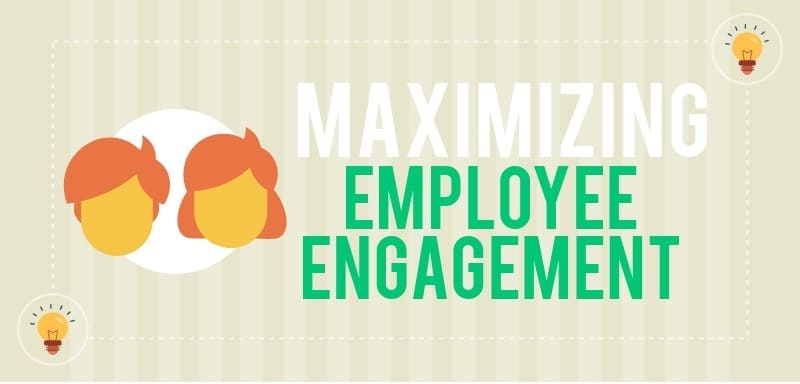
Maximising Employee Engagement
Maximising Employee Engagement
Making a business succeed in a competitive environment can be tough. The company might focus on pricing strategy or competitive advantage. Thousands, even millions, can be poured into research and development for new products. Often overlooked are the employees who make all that happen, and who can be the critical point of success or failure.
Employee engagement is a concept that emerged in the 1990s and allows people to connect their own personality and practices to the tasks they are given at work. This allows employees to feel more connected to the business and more determined to achieve positive outcomes for all.
There are a number of strategies in employee engagement strategies to develop a genuine and meaningful benefit for both employees and the company.
Build pathways
The recruitment process isn’t just a way for the applicant to advertise themselves. It is an opportunity for the business to advertise their credentials as a great place to work. Your business should promote the opportunities for personal and career development. Having long-term employees allows the business to develop effective workplace mentoring programs, minimises recruitment and training costs and cultivates a solid company culture.
High employee turnover in a business can be expensive, for both the bank account and public perception. Having clear, achievable long- and short-term career pathways builds loyalty and respect for the business amongst the team.
Using people analytics, Harvard Business Review found out the following of employees who stick around:
- They find their position enjoyable 31% more often
- They used their specific talents 33% more often
- They expressed 37% more certainty that they were gaining valuable experience and skills to power their career
Flexible work arrangements
For many employees, access to flexible working arrangements may carry a significant benefit for their personal lives with minimal impact on the business. This flexibility can help with employee retention, happiness and the reputation of the business.
Australia’s National Employment Standards sets out rights and responsibilities for both the business and the employee in requesting altered schedules or conditions. All Australian employees are covered by these standards and they include changes to work hours, patterns of work (such as job sharing) and changes in location of work.
Employers can refuse requests for reasonable business grounds including that the changes are too costly for the business, there would be negative impact on customers, or there is no capacity to make the changes. For example, a person requesting to work one day on the weekend instead of a weekday for a Monday-to-Friday business could be reasonably refused.
While these standards are formal, it is a good idea for companies to work with employees to find solutions for work-life balance. Building a ‘give-take’ culture demonstrates the genuine effort to consider the different needs individuals may have.
Recognise hard work
Providing employees with constructive feedback is a non-negotiable part of management practice. It can be difficult when it’s time to give some ‘tough love’ advice, but this can be valuable to all involved. However, there is one major caveat to this – when giving feedback, employees don’t separate the words from the person saying them. If employees trust and value their managers, the feedback is likely to be significantly more effective.
On the other end of the scale, when someone in the business goes over and above to achieve positive results, it is very important they are acknowledged for it. This doesn’t have to be monetary or a tangible reward, but it does need to be genuine.
Whether the reviews of workers are positive or negative, delivering these in real-time can have a huge impact. Don’t wait for a formal performance review or meeting. Regular, just-in-time feedback allows workers to make small adjustments in their work practices without having to try to rebuild their skills from the ground up later down the track.
Live and breathe your workplace culture
When it comes to maximising employee engagement, every person in the company needs to be able to embrace the corporate culture in a genuine way. Companies which try to force this culture on workers can fail dismally, but a successful business shouldn’t even need to try.
Business leaders from the Forbes Coaches Council list a range of ways to reinforce company culture including:
- Get people proud and excited of what the company is achieving. Show them the difference they are making.
- Communicate regularly: if changes are happening in the business, let workers in on the information. This shows the business trusts and values their input.
- Be inclusive. Engage with employees from a diverse range of demographics, including age, race, sexuality, and gender to guide decision-making.
- Ensure all workers have the right tools to do their jobs. This can include current, efficient technologies (both for their own work, and administration, such as payroll processing), comfortable physical environments, and workplace amenities.
Spending time building culture can pay dividends in recruiting the best talent, upskilling employees into new roles, and promoting the company long after retirement.